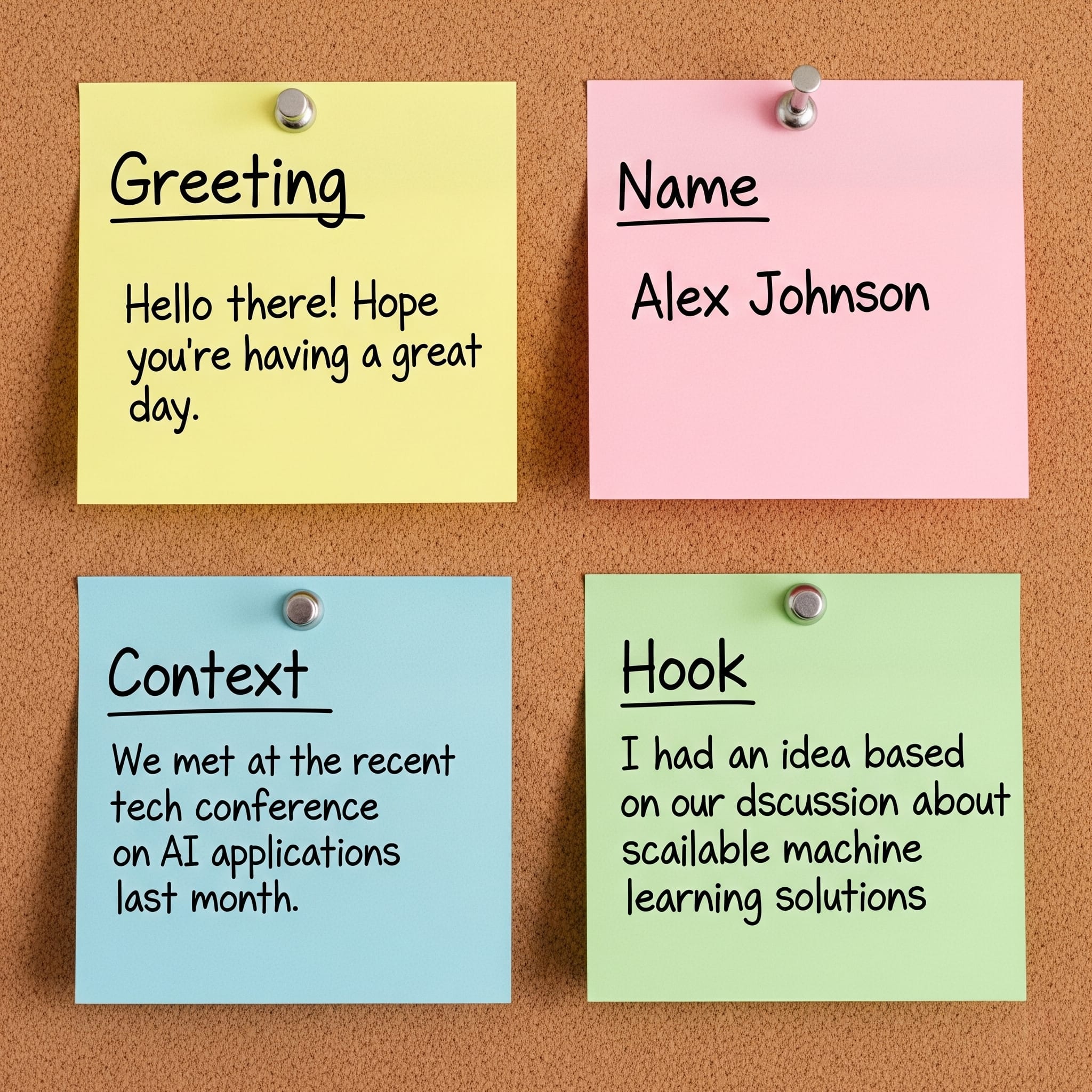10 Best Ways to Introduce Yourself in a Group Discussion
Discover top tips for a standout group discussion introduction. This guide covers simple strategies, Clapingo insights, FAQs, and actionable GD tips for students.

Why Your GD Introduction Matters
A strong introduction sets the tone in a group discussion. It shows you’re confident, clear, and thoughtful. For students, nailing this moment helps you stand out and contribute well.
We'll explore easy ways to introduce yourself, with practical advice and tools to help you feel ready.
A group discussion introduction is your first opportunity to make an impression. It sets the tone for how peers and moderators perceive you. A confident, clear, and structured intro shows that you are prepared, articulate, and engaged.
Many students focus solely on content, but the way you present yourself is equally important. Think of it as the doorway to your ideas—the first step that determines whether others pay attention to what you say next.
A strong GD introduction also reduces anxiety. When you know exactly what to say, your confidence increases, helping you respond better during the discussion. In competitive scenarios like campus placements or college GDs, your introduction can give you a slight edge over others.
Clapingo Insight: Many students who practice their GD introductions with Clapingo report feeling calmer and more confident. With guidance on clarity, tone, and body language, you can turn your first 20–30 seconds into a memorable impression.
What Is a Group Discussion Introduction?
A GD introduction is your first words in a discussion.
You share who you are and what you bring to the topic.
It may involve your name, background, and your interest in the topic.
Keep it short and positive: think “Hello, I’m [Name]. I study [subject], and I’m keen to talk about [topic].”
Key Elements of a Great Group Discussion Introduction
1. Clarity
Say your full name slowly and clearly.
2. Relevance
Mention your field or a brief point that ties into the topic.
3. Positivity
Keep a friendly tone and open body language.
4. Brevity
Aim for 20–30 seconds. It should feel natural—like a conversation.
Importance of a Strong GD Introduction
The first impression is often lasting. A well-crafted introduction in a GD does more than just tell your name. It highlights your clarity, thought process, and confidence.
A strong introduction can:
Signal that you are attentive and engaged.
Make moderators notice your communication skills.
Encourage peers to value your contributions.
Students often underestimate how a 20–30 second introduction can influence the discussion. A clear introduction conveys professionalism and readiness, while a disorganized one can give the opposite impression.
Clapingo Tip: Avoid rushing through your introduction. Speak clearly, smile, and maintain an open posture. Your introduction is the first “foot in the door” for a successful GD experience.
Anatomy of a GD Introduction
A perfect GD introduction usually follows four components:
Greeting – A polite opener such as “Good morning” or “Hello everyone.”
Name – Your full name, clearly articulated.
Context – Your course, year, or professional background.
Hook – A brief personal or topic-related interest to show engagement.
Example:
“Good morning, everyone. I’m Priya Sharma, a second-year MBA student. I’m excited to discuss marketing strategies today and learn from all of you.”
This formula is simple, concise, and adaptable. The hook is optional but highly recommended. It creates a personal touch and makes you memorable.
Common Fears Students Face During GD Introductions
Many students feel nervous when introducing themselves in a GD. Common fears include:
Fear of Speaking First: Students worry about being judged or making mistakes.
Language Concerns: Non-native speakers may fear poor English fluency.
Lack of Confidence: Feeling unprepared to share thoughts clearly.
Quick Fixes:
Deep breathing to calm nerves.
Having a simple 4-step intro script.
Practicing with peers or tutors to build confidence.
Clapingo Tip: Practicing your introduction with Clapingo allows you to receive instant feedback on tone, clarity, and fluency, helping you overcome nervousness faster.
Personalizing Your Introduction Without Overdoing It
Adding a personal touch makes your Group Discussion Introduction stand out. Avoid generic intros like: “I’m John, student of commerce.”
Better:
“Hello everyone, I’m John, a commerce student interested in financial analytics. I enjoy analyzing market trends, which is why this topic excites me.
The key is balance—share enough to be memorable, but not so much that you waste time. Your hook should relate to either the topic or your interests relevant to the Group Discussion.

Body Language in GD Introductions
Communication is 55% non-verbal. Your body language reinforces your introduction:
Sit upright, avoid slouching.
Smile naturally to appear approachable.
Maintain light eye contact with group members.
Use minimal hand gestures—avoid fidgeting.
Clapingo Mini Exercise: Practice your introduction while standing in front of a mirror. Notice posture, expressions, and hand movements.
Timing Your Introduction
Your GD introduction should be concise: 20–30 seconds is ideal.
Too Short:
“I’m Ramesh, MBA student.” → Lacks engagement.
Perfect:
“Good morning, I’m Ramesh, MBA student specializing in marketing analytics. I’m excited to discuss digital marketing trends today.”
Tip: Practice with a timer to ensure you hit the sweet spot. Speaking too fast can confuse listeners, and speaking too long may bore them.
Clapingo Spotlight: Unlocking Confidence in Your GD Introduction
CLAPINGO TIP: Use a mini-script to calm your nerves. Clapingo’s students often start with:
“Good morning, everyone. I’m [Name], pursuing [Course]. I'm excited to share my views and learn from you all today.”
Practice a few times aloud to build comfort.
Best Practices: Group Discussion Tips for Students
Know the Topic Briefly
Have even a simple hook or key point ready.Start with a Greeting
Always open with “Hello” or “Good morning.”Use Your Name and Course
“I am [Name], studying [Subject/Year].”Add One Relevant Hook
“I’ve read about [aspect] which I look forward to discussing.”Pause and Listen
After your intro, let others speak—don’t rush.Watch Your Tone
Be enthusiastic but not over the top.Mind Your Body Language
Smile, make light eye contact, and keep an open posture.Be Yourself
Authenticity matters more than perfection.
Advanced GD Tips for Students
Be Topic-Relevant: Even a small reference to the GD topic shows preparation.
Show Curiosity: Phrases like “I’m interested in exploring…” or “I look forward to learning from this discussion…” work well.
Mind Vocabulary: Use simple, clear words. Avoid over-complicating sentences.
Engage Others: Your intro should invite conversation, not close it.
Example:
“As an IT student, I’m keen to explore how artificial intelligence impacts employment opportunities in the tech industry.”
Clapingo Quick Tip: The One-Liner Wonder
CLAPINGO QUICK TIP: Keep a one-liner ready. It’s a mini intro that’s clear and memorable.
“Hi, I’m [Name], a second-year commerce student. I’m interested in the topic because [brief reason].”
One good line can help you dive in confidently.
Common Mistakes to Avoid
Speaking too fast.
Using filler words (“um,” “like”).
Over-sharing or giving a full biography.
Repeating what others already said.
Clapingo Pro Tip: Tutors often advise slowing down and pausing between sentences. Record yourself to catch filler words and improve pacing.
Structuring Your Self-Introduction (Step-by-Step)
| Step | What to Say | Why It Works |
|---|---|---|
| 1 | Greet (“Hello everyone,”) | Shows politeness |
| 2 | Name & Class (“I’m [Name], third-year biology”) | Gives context |
| 3 | Brief Interest Hook | Shows engagement |
| 4 | Wrap & Transition (“I look forward to discussing…”) | Signals you're ready to listen |
Did You Know?
Simple details can make your intro more memorable. Mentioning a small personal connection like “I love debating about renewable energy” even briefly can help others recall you later.
Tips & Tricks for Remembering Introductions
Sticky Note Trick: Write your intro on a card and practice daily.
Use Mnemonics: Attach your hook to your name.
Mirror Practice: Say it while looking in a mirror to build confidence.
Record and Review: Record yourself and notice tone and pauses.
Friendly Reminder: It’s okay to pause or clarify if you feel nervous.
Clapingo Confidence Booster
CLAPINGO BOOSTER: If you feel stuck mid-intro, say:
“Sorry, just a quick clarification…”
Then gather your thoughts and continue. It’s better than freezing.

The Sticky Note / Note Card Method
Writing a short intro outline on a sticky note or note card is a great memory aid.
Steps:
Greeting: “Hello everyone”
Name: “I’m Priya Sharma”
Context: “MBA, 2nd Year”
Hook: “Interested in marketing strategies”
Clapingo Pro Tip: Color-code each section for visual memory—name in blue, hook in green. Practice daily until it becomes natural.
More Common Mistakes to Avoid
Over-talking: Keep it concise.
Ignoring the Group: Don’t just recite—engage.
Going Off-Topic: Stay relevant.
Mumbling or Speaking Too Fast: Speak slowly and clearly.
Practicing Alone vs. With Experts
Alone: Allows mirror practice, recording, and low-pressure rehearsal.
With Experts: Offers real-time feedback and live interaction.
Clapingo Tip: Practice one-on-one with a tutor to combine the benefits of solo and peer practice. Immediate feedback on pronunciation, clarity, and structure improves confidence quickly.
Sample Introductions to Inspire You
For MBA students:
“Good morning, everyone. I’m Priya Sharma, an MBA candidate in my second year. I’m keen to discuss the marketing challenges here, especially digital outreach strategies.”For engineering undergrads:
“Hello, I’m Rahul, third-year engineering student. I’ve always been fascinated by how technology shapes society, so this topic on smart cities excites me.”For literature majors:
“Hi there. I’m Anjali, third-year English literature student. I love exploring narrative techniques, so I look forward to diving into today’s discussion.”Campus Placements:
“Good morning, I’m Anjali, MBA student passionate about HR. I believe people are the core of business success.”College GD:
“Hi, I’m Raj, second-year economics student, curious to explore today’s topic.”Online GDs:
“Hello everyone, I’m Kiran, third-year computer science student. Excited to discuss cybersecurity trends today.”
Power of Listening After Your Introduction
Your introduction is just the start. Active listening ensures you can respond meaningfully.
Nod to show engagement.
Take quick notes.
Refer to others’ points when contributing.
Good listeners often leave a stronger impression than those who speak the most.

Tips & Tricks from Experts
Record yourself and note filler words.
Practice tongue twisters for clarity.
Use power words like explore, excited, contribute, perspective.
Smile naturally to appear approachable.
Rehearse in front of a mirror or camera.
Clapingo Bonus: Experts at Clapingo provide mini “confidence drills” for students before GDs, helping them feel prepared under pressure.
Did You Know?
People remember the first things you say more than later points.
- Your introduction often determines how attentively peers listen to you.
Students who practice with tutors or scripts are 70% more confident in live Group Discussions.
Quick Recap Checklist
Greet politely.
State your name clearly.
Mention your background/course.
Add a hook/interest.
Maintain posture, eye contact, and smile.
Pause and listen after your intro.
Try Clapingo today and master your GD introduction with expert guidance. Personalized coaching makes your first impression count.
Final Wrap-Up
To nail your group discussion introduction, keep it short, clear, genuine, and relevant. Use a greeting, your name, a quick hook, and then let the flow begin. Clapingo’s tactics help you practice and stay calm. With these GD tips for students, you’ll present yourself with confidence and connection.
Relevant Blogs You Should Check Out
Creative Self-Introduction Ideas for Students: Unique Introduction Examples & 5 Special Tips
Self Introduction in English For Students: 5 Easy Ways to Introduce Yourself
Unlocking Effective Communication: How To Nail Your Self Introduction In English
Conclusion: Master Your Group Discussion Introduction
Your group discussion introduction is more than a formality — it’s your chance to leave a strong first impression. A confident greeting, clear self-introduction, and a short but engaging hook can set the stage for the rest of the GD.
Remember these key takeaways:
Keep it simple and structured — Greeting → Name → Context → Hook.
Avoid common mistakes like rambling, fillers, or speaking too fast.
Practice body language along with your words.
Use tools like a sticky note outline to stay sharp.
And most importantly, practice regularly to sound natural and confident.
Final Tip: A great introduction doesn’t guarantee success in the GD, but a poor one can make it harder to recover. Start strong and let confidence carry you through.
If you feel nervous or unsure, don’t worry, you’re not alone. Thousands of students face the same challenge, and that’s where Clapingo can help. With expert guidance, real-time corrections, and mock GD sessions, you can practice until your introduction feels effortless.
Take the next step: Book a Clapingo session today and walk into your next group discussion with confidence.